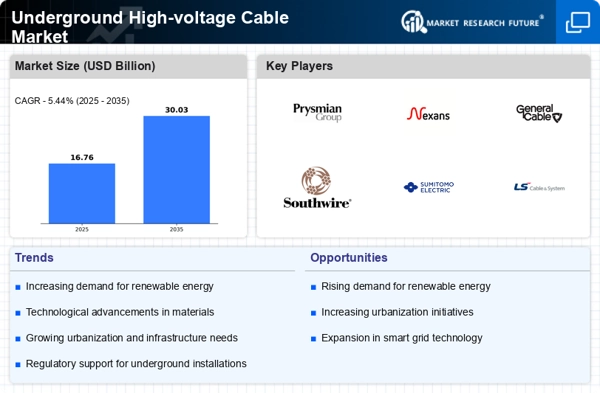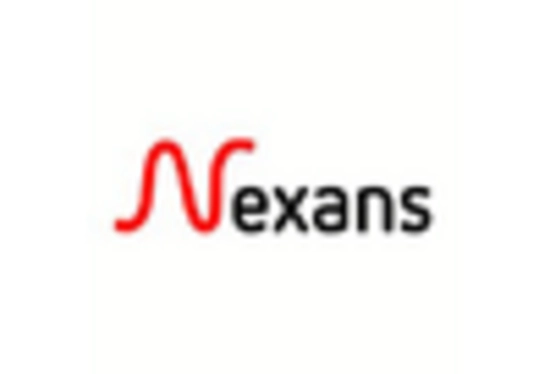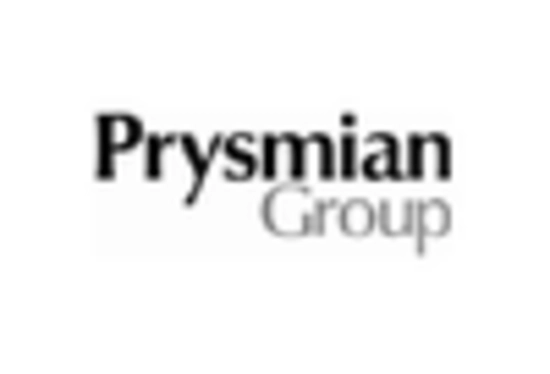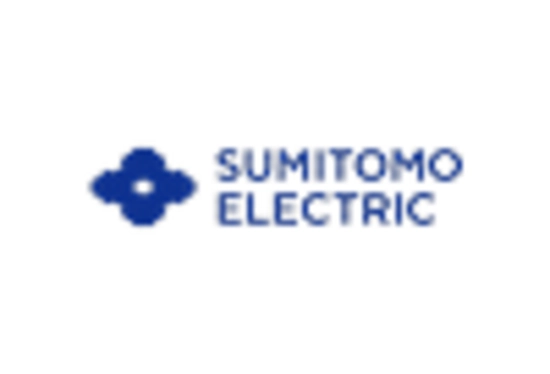Government Initiatives and Investments
Government initiatives aimed at enhancing energy infrastructure are pivotal for the Underground High-voltage Cable Market. Many governments are implementing policies that promote the use of underground cables to improve safety and reliability in power distribution. For instance, funding programs and incentives for infrastructure projects are being introduced to encourage the adoption of advanced technologies. According to various governmental reports, substantial investments are being allocated to upgrade aging electrical grids, with a focus on underground solutions. This proactive approach not only addresses current energy demands but also prepares for future growth, thereby fostering a conducive environment for market expansion.
Increasing Demand for Renewable Energy
The transition towards renewable energy sources is driving the Underground High-voltage Cable Market. As countries aim to reduce carbon emissions, there is a notable shift towards wind, solar, and hydroelectric power. This shift necessitates the development of robust infrastructure to transport electricity from generation sites to consumption areas. The International Energy Agency indicates that investments in renewable energy infrastructure are expected to reach trillions of dollars in the coming years. Consequently, the demand for underground high-voltage cables, which facilitate efficient energy transmission with minimal losses, is likely to surge. This trend not only supports energy security but also aligns with global sustainability goals, thereby enhancing the market's growth potential.
Rising Awareness of Environmental Impact
There is a growing awareness regarding the environmental impact of energy transmission, which is shaping the Underground High-voltage Cable Market. Stakeholders are increasingly recognizing the benefits of underground cables, which minimize land use and reduce visual pollution compared to overhead lines. This awareness is prompting utilities and governments to prioritize underground installations as part of their sustainability initiatives. Reports indicate that underground cables can significantly lower the risk of outages caused by severe weather, thus ensuring a more reliable power supply. As environmental considerations become more prominent in energy planning, the demand for underground high-voltage cables is expected to rise, aligning with broader ecological objectives.
Urbanization and Infrastructure Development
Rapid urbanization is a key driver for the Underground High-voltage Cable Market. As urban areas expand, the need for reliable and efficient power distribution systems becomes increasingly critical. Urban centers require extensive electrical networks to support residential, commercial, and industrial activities. The World Bank has reported that urban populations are expected to grow significantly, leading to heightened demand for electricity. Underground high-voltage cables offer a solution to the challenges posed by overhead lines, such as aesthetic concerns and susceptibility to weather-related disruptions. This trend towards underground installations is likely to continue, further propelling the market as cities invest in modernizing their electrical infrastructure.
Technological Innovations in Cable Manufacturing
Technological advancements in cable manufacturing are significantly influencing the Underground High-voltage Cable Market. Innovations such as improved insulation materials and enhanced conductor designs are leading to the production of more efficient and durable cables. These advancements allow for higher voltage capacities and longer transmission distances, which are essential for modern energy demands. The market is witnessing the introduction of smart cables equipped with monitoring systems that provide real-time data on performance and potential issues. Such innovations not only enhance operational efficiency but also reduce maintenance costs, making underground high-voltage cables a more attractive option for utility companies and infrastructure developers.

















Leave a Comment